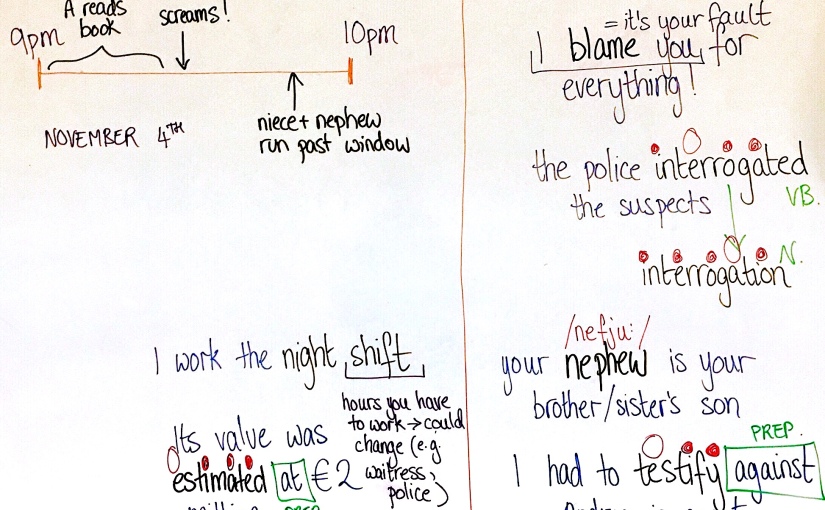So, I’m walking out the door of the staffroom. It’s 6:05pm. (Last class of the day – almost done!) I’ve got one foot in, one foot out, when my DoS walks up to me and asks if the new teacher who joined us earlier this week could possibly come observe my class. (The one that starts five minutes from now, that is.) For a good few seconds, I stand there slack-jawed, waiting for that old familiar observation panic to kick in … but it never comes. And then I hear a calm voice (my voice?) coolly say, “Yeah, of course. That’s absolutely fine.”
How did we get here, ladies and gentlemen? Was it really that long ago when the mere idea of another teacher being in my classroom was enough to make me break into a sweat, mess up my staging and forget half my lesson plan? How many hours would I spend slogging over lesson plans and language analysis sheets that my line managers would inevitably spend a maximum of ten minutes glancing over during a quick pre-obs meeting? How many nights would I spend obsessively going over an observed lesson, making a mental note of all the things I could have done differently?
Hard though it is to pinpoint exactly when and how my observation-related fears suddenly vanished, I think it mainly comes down to the following factors:
Saturation. I was observed so often during Delta Module 2 and the IH CYLT that it almost started to seem weird not to have someone sitting in my classroom at all times, making notes on every single thing I thought, said and did, and then reporting those notes back to me afterwards in minute and at times frankly unnecessary detail!
Awareness. Again, thanks to Delta Module 2, I’m much more aware of my own beliefs and assumptions as a teacher, and I can use them to fully justify every one of those instinctive decisions we constantly have to make during a lesson. This also means I’m comfortable identifying, analysing and criticising my own decisions post-obs, all the while avoiding that rookie CELTA mistake of, “Oh god, it was terrible!”
Interest. As a lover of teaching and learning, and an ambitious young professional, I am chomping at the bit to learn everything I possibly can about what I do. Observations are, hands down, one of the best ways to do that. There’s nothing like personalised, constructive, forward-looking feedback to boost your standards!
Confidence. Having received, on balance, more positive observation feedback than negative in my teaching career so far, I can now tell myself I’m statistically unlikely to make any life-altering mistakes that will have me berating myself for hours afterwards. (Not that this doesn’t still happen from time to time, of course!) TLDR; I can say with some certainty that I don’t completely suck at my job.
Prudence. Now that I’ve been teaching for almost four years, I know that observations are not the time to try new, complicated activities you’ve never done before, unless that’s the specific aim of the observation as pre-arranged with your observer. I know not to try to fit two hours of teaching into 80 minutes. I also know when to throw the lesson plan and the rules out of the window and just go with it.
As for my observation today, it went very well, thank you very much for asking! My students were absolutely stellar, as they always are, and gave me a lot of food for thought via a discussion about fake news and the modern role of social media as a primary news source for the public. Here’s the #ELTwhiteboard from the lesson for your viewing pleasure:





